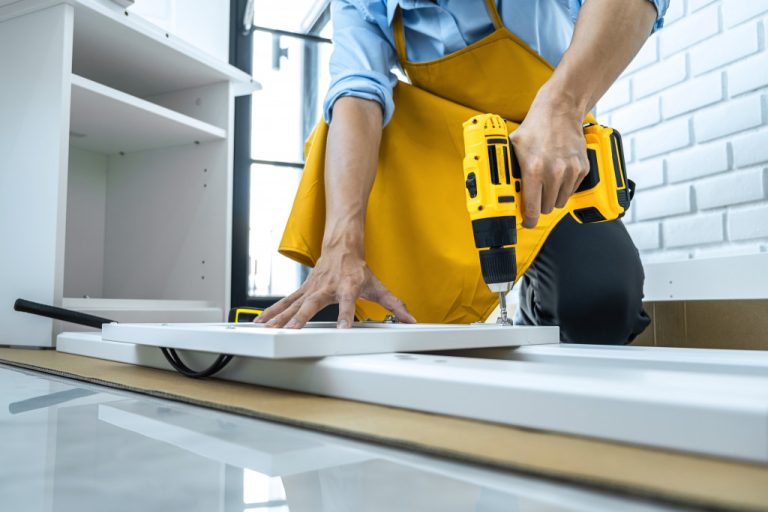The pandemic saw home improvement spending increase after people had to stay home to avoid the virus. Homeowners wanted to increase the comfort and safety of their homes by installing new appliances, upgrading furniture, and remodeling bathrooms and kitchens. Additionally, many home improvement projects are undertaken to increase the market value of a property for potential buyers.
Even after the situation improved, renovation projects continued. People started embracing the idea of a “staycation” by creating their own spaces at home. As such, they are investing in projects like outdoor living areas, decks, and patios. Other popular renovation projects include adding energy-saving features to the home, such as energy-efficient windows and doors.
But updating the look of your home doesn’t have to be expensive or time-consuming. You can easily give your space a fresh look without breaking the bank with just a few minor changes. Here are some affordable ways to enhance your home.
Declutter and Accessorize
The quickest, most affordable way to update your home is by decluttering and accessorizing. Start with one room at a time and remove anything unnecessary for everyday living. This includes items like extra furniture, books, magazines, and decorative pieces that don’t serve any purpose.
Once you’ve removed all unnecessary clutter from the room, add some small accessories that coordinate with its existing décor. A few strategically placed pillows or a new piece of art can make all the difference in how inviting the room looks and feels. You can also look for durable permanent adhesive vinyl to decorate the home. The material is water-resistant, meaning you can use it anywhere inside or outside the house. It’s an affordable and easy way to personalize any room in your home.
Finally, use lighting to enhance the overall ambiance of a space. If you don’t have enough natural light from the windows, install a few lamps or wall sconces to brighten up the area.

Paint Refresh
Painting an entire room can get expensive if you hire someone else to do it; however, if you’re willing to do it yourself, it can be relatively inexpensive—especially compared to other kinds of home improvements.
Plus, painting is one of those projects requiring minimal effort but yielding maximum impact. Suppose you want an entirely different look but need more budget for major renovations like replacing floors or countertops. In that case, painting is the perfect way to transform your space without spending too much money or taking up too much time.
When painting the house, you should always start with the ceilings. This will help ensure that any splatters or drips from painting the walls, trim, and doors won’t ruin the ceiling paint job. Once you’ve painted all of your home’s ceilings, you can move on to the walls, trim, and doors.
It’s usually best to start with the walls and work your way down. This will help minimize any mess you make while painting, as you’ll be able to clean up spills or splatters before they reach the trim or doors. When choosing paint colors, consider how natural light will affect them throughout the day—particularly if you’re painting a room that receives lots of natural light.
Add Greenery
Bringing nature indoors is another great way to update your home without breaking the bank. Incorporating plants into your décor adds life and texture while improving air quality (especially during allergy season).
Depending on where you live and what type of plant(s) you choose, indoor plants can range from zero dollars (for succulents grown from scraps) up to hundreds of dollars for more exotic varieties. Potted plants are easy to care for and come in all shapes and sizes, so plenty of options are available regardless of your budget or skill level in gardening.
If you want a more permanent addition to your home, consider adding ivy or other climbing plants that can be trained to grow up walls and around door frames.
Indoor plants can also reduce stress levels and provide a more calming environment. A study involving 24 male adults showed that active interaction with plants can minimize psychological and physiological stress among people.
The reduction was due to a decrease in sympathetic nervous system activity and diastolic blood pressure, as well as an increase in positive emotions such as comfort and soothed feeling.
Adding greenery to your home is a simple yet effective way to make it more tranquil and inviting. Whether you opt for potted plants or climbing vines, incorporating nature into your décor can help reduce stress and promote peacefulness in your home.
Updating the look of your home doesn’t have to be expensive or time-consuming. You have several creative options to enhance your space on a budget. You can give any room in your house a new feel without putting too much strain on your wallet by following the tips in the article. So go ahead – start sprucing up those spaces. You may be surprised at what a difference just a few simple changes can make.











